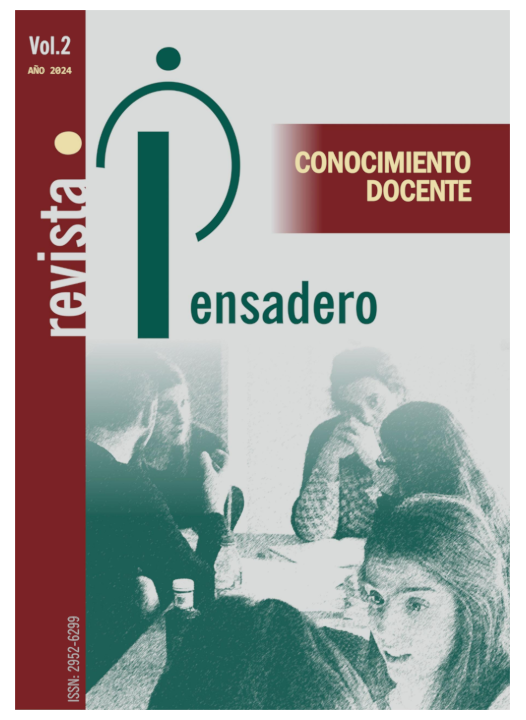Abstract
The imperative of innovation in the educational context is a fact that can be verified from supranational and national educational policy and at all levels and stages, from compulsory education to higher university studies. This article is situated in the current innovation context, specifically within the university education framework for future teachers. Its objective is to answer the question of whether there are better ways to innovate at the university, having as a premise that recovering (renewing, making new ones) the missions of the university is what would help the most to improve the institution and the training of those who They are formed in it, as intellectuals open to the totality of reality and the big questions. We offer a pedagogical proposal on how to renew the university with the pedagogical resource of cinema as a privileged link between university subjects and the cultural world, helping future teachers to ask themselves better questions and think better about the educational context. We detail the pedagogical performance of the film Whiplash around the debates of demand and excellence in the academic world. Innovation (and success) in the university classroom draws from the dynamism of the teacher's intellectual life, and certain audiovisual activities can provoke and renew it.
References
Aquino, Tomás de (1994). Suma de Teología. B.A.C.
Aristóteles (1873). Moral a Nicómaco. Medina y Navarro Editores.
Barrio, J. M. (2022). La verdad sigue siendo muy importante, también en la Universidad. Teoría De La Educación. Revista Interuniversitaria, 34(2), 63–85. https://doi.org/10.14201/teri.27524
Bellamy, F. X. (2018). Los desheredados: por qué es urgente transmitir la cultura. Encuentro.
Bellamy, F. X. (2020). Permanecer. Para escapar de la era del movimiento perpetuo. Encuentro.
Burbules, N. C. (2019). Phronesis y complejidad. Teoría De La Educación. Revista Interuniversitaria, 32(1), 11–22. https://doi.org/10.14201/teri.20846
Camps, V. (1990). Virtudes públicas. Austral.
Cerdá, D. (2022). Ética para valientes: El honor en nuestros días. Rialp.
Cuevas Romo, J. (2020). Imaginarios sociales sobre uso de tecnología y relaciones interpersonales en jóvenes universitarios a través del cine de ficción como recurso didáctico. Sophia, colección de Filosofía de la Educación, 28, 165-184. https://doi.org/10.17163/soph.n28.2020.06
Darling-Hammond, L. (2017). Teacher education around the world: What can we learn from international practice? European Journal of Teacher Education, 40(3), 291–309. https://doi.org/10.1080/02619768.2017.1315399
Dias-Trindade, S., Moreira, J., & Rigo, R. (2021). O cinema como recurso pedagógico promotor de engagement na educação superior. Praxis & Saber, 12(29), 11934-11947. https://doi.org/10.19053/22160159.v12.n29.2021.11934
Eco, U. (1981). Tratado de semiótica general. Lumen.
Esteban, F. (2019). La universidad light. Un análisis de nuestra formación universitaria. Paidós.
Esteban, F. (2022). Extravío de la educación universitaria contemporánea. Teoría De La Educación. Revista Interuniversitaria, 34(2), 23–41. https://doi.org/10.14201/teri.27739
Freire, J. (2022). Hazte quien eres. Un código de costumbres. Deusto.
Fulford, A. (2022). La universidad como alborotadora. Teoría de la Educación. Revista Interuniversitaria, 34(2), 1-22. https://doi.org/10.14201/teri.27819
García Morente, M. (2012). El ideal universitario y otros ensayos. Eunsa.
Garrocho, D. S. (2022). La Universidad como propósito. Una misión para nuestra institución. Teoría De La Educación. Revista Interuniversitaria, 34(2), 43–61. https://doi.org/10.14201/teri.28333
Gusdorf, G. (2019). ¿Para qué profesores? Por una pedagogía de la pedagogía. Miño y Dávila.
Hutchins, R. M., y Pascual Martín, À. (2022). La Educación Superior en América. Eunsa.
Jandrić, P., & McLaren, P. (2021). Critical intellectuals in postdigital times. Policy Futures in Education, 19(6), 626–639. https://doi.org/10.1177/1478210320964372
Manago, A., Santer, N., Barsigian, L. L., & Walsh, A. (2021). Social media as tools for cultural change in the transition to adulthood”. En K. C. McLean (Ed.). Cultural methods in psychology: Describing and transforming cultures (pp. 146-173). Oxford University Press.
Muñoz Casillas, J. M. (2001). El cine como recurso pedagógico. Campo Abierto, 20, 179-197.
Newman, J. H. (2014). La idea de la Universidad. Encuentro.
Luri, G. (2020). La escuela no es un parque de atracciones. Paidós.
Recalcati, M. (2017). La hora de clase. Por una erótica de la enseñanza. Anagrama.
Orozco-Olvera, V., Shen, F., & Cluver, L. (2019). The effectiveness of using entertainment education narratives to promote safer sexual behaviors of youth: A meta-analysis. PloS one, 14(2), 1985-2017. https://doi.org/10.1371/journal.pone.0209969
Ortega y Gasset, J. (2007). Misión de la universidad. Biblioteca Nueva.
Pozo-Armentia, A., Reyero, D., & Gil Cantero, F. (2020). The pedagogical limitations of inclusive education. Educational Philosophy and Theory, 52(10), 1064-1076. https://doi.org/10.1080/00131857.2020.1723549
Reyero, D., & Gil Cantero, F. (2019). La educación que limita es la que libera. Revista Española de Pedagogía, 77(273), 213-228. https://doi.org/10.22550/REP77-2-2019-01
Rumayor, M. (2019). John Henry Newman y su idea de la universidad en el siglo XXI. Educación XX1, 22(1), 315-333.
Steiner, G., & Ladjali, C. (2020). Elogio de la transmisión. Siruela.
Steiner, G. (2016). Un largo sábado: conversaciones con Laure Adler. Siruela.
Till, B., Vesely, C., Mairhofer, D., Braun, M., & Niederkrotenthaler, T. (2019). Reports of adolescent psychiatric outpatients on the impact of the TV series 13 Reasons Why: A qualitative study. Journal of Adolescent Health, 64(3), 414-415.
Torralba, J. M. (2022). Una educación liberal: Elogio de los grandes libros. Encuentro.
Vincent-Lancrin, S., Urgel, J., Kar, S., & Jacotin, G. (2019). Measuring Innovation in Education 2019: What Has Changed in the Classroom? Educational Research and Innovation. OECD Publishing. https://doi.org/10.1787/9789264311671-en
Westerlund, M. (2019). The Emergence of Deepfake Technology: A Review. Technology Innovation Management Review, 9(11): 40-53. http://doi.org/10.22215/timreview/1282

This work is licensed under a Creative Commons Attribution-NonCommercial-NoDerivatives 4.0 International License.
Copyright (c) 2024 Tania Alonso , David Reyero


